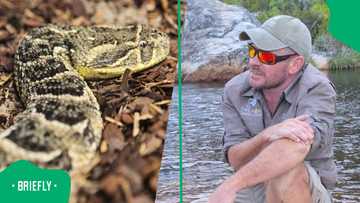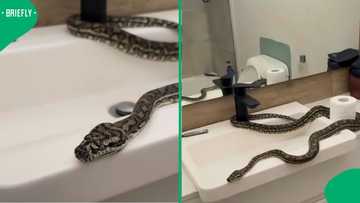Fear or Fascination? Nick Evans Talks Snakes and Myths in South Africa’s Gardens
- For most South Africans, spotting a snake slithering across the garden or coiled in the storeroom sparks fear
- Snake encounters in South Africa are more common than many people realise, but the types of snakes one sees often depend on the region
- Briefly News sat down with snake rescuer Nick Evans to debunk some myths and spread awareness about snakes in South Africa
Most people are afraid of snakes and are right to be so because a snake bite can be fatal. An interesting fact is that most species are harmless. For seasoned snake rescuer Nick Evans, snake encounters tell a different story. To him, snakes are not villains but vital creatures in our ecosystem, often misunderstood and unfairly maligned.
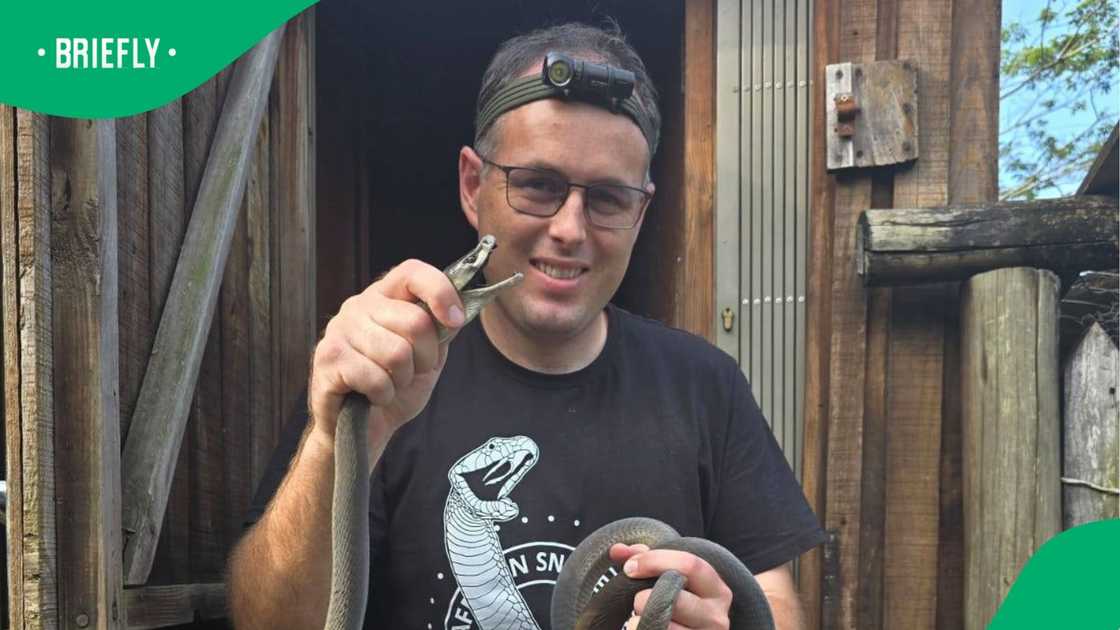
Source: Facebook
What you see depends on where you live
According to Evans, the types of snakes one sees often depend on the region. In Durban, harmless species such as the Spotted Bush Snake, Herald Snake, and Brown House Snake appear frequently, while venomous snakes like the Common Night Adder, Mozambique Spitting Cobra, and Black Mamba are present but less common. In the Cape, people are more likely to encounter the Common Slug-eater and Mole Snake, with venomous species including Cape Cobras, Boomslang, and Puff Adders.

Read also
A teen’s video of gifting his 2-year-old brother a live corn snake surprised Mzansi with its unusual twist
Most dangerous snakes
While snakes are often feared, only a handful pose a real danger. Evans stated that most snakes are only dangerous when provoked. He said that accidents happen where neither the human nor the snake is at fault. The most dangerous snakes are the Black Mamba & Cape Cobra.
"The snakes with the most dangerous bite are the Black Mamba & Cape Cobra, which have a fast-acting neurotoxic venom, which requires a patient to be urgently transported to hospital. However, they bite very few people," Evans said.
Evans explained that the Mozambique Spitting Cobra, Puff Adder, and Stiletto Snake are responsible for most bites. This is often because cobras seek shelter in homes, puff adders lie quietly on paths, and stiletto snakes are picked up by people who assume they are harmless because of their small size.
Rescue patterns have also shifted over time. A few years ago, Mozambique Spitting Cobras and Night Adders were the most commonly venomous snakes being caught, with Black Mambas ranking third. For two to three years, Black Mambas became the most frequent species Evans rescued, but this year, cobras and night adders have returned as the most common.
"Climate is a factor. I've noticed a few changes. It is interesting to document. We're always learning," he added.
Common myths about snakes
Misconceptions about snakes remain widespread. One of the most common myths is the belief that “the only good snake is a dead snake.” In reality, snakes play a vital role in the environment by controlling populations of rodents, frogs, and lizards, while also serving as prey for other animals. Some medications are even derived from snake venom.
"One needs to worry far more about other humans, the most dangerous creature on Earth," he said.
Another myth is that repellents such as Jeyes’ Fluid, commercial products, certain plants, or burning tyres can keep snakes away. Research and experience show that no repellents work. The most effective way to prevent snakes from entering properties is to maintain a neat, tidy environment and to keep rodents under control.
"Do not let rats breed anywhere, such as in a cupboard, or in your mattress. Yes, I see that occasionally, as that will certainly attract snakes. Also, trim tree branches away from your roof, and shrubs away from windows, but you do not need to cut them right down," he advised.
Why most people fear snakes
Evans said that the fear of snakes often stems from a lack of education, misunderstandings, and influences such as horror movies. He encourages people to learn more about snakes, whether through groups like Snakes of South Africa or other educational resources. With time and knowledge, people can reduce or even overcome their fear.
"There is nothing to be ashamed of in being scared of snakes. A healthy respect of snakes is required. If you are willing to try and overcome your fear, try and learn more about them. It may take years, but it is likely you will reduce your fear, hopefully completely," he said.
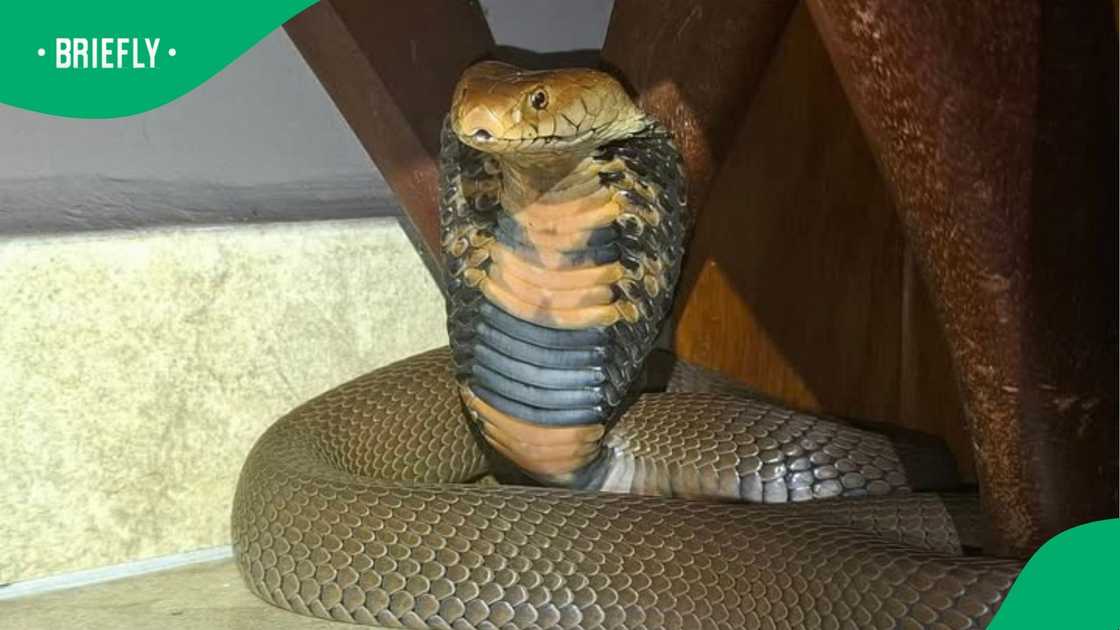
Source: Facebook
Here's what to do when encountering snakes
Knowing what to do during an encounter can make all the difference. Evans advised backing away slowly, keeping at least five metres from the snake, and avoiding attempts to catch or kill it. Dogs should also be kept away, as they might attack the snake but risk being bitten in return. Calling a snake remover is the safest option, and it is vital to watch the snake until help arrives. Once sight of the snake is lost, it becomes very difficult for removers to locate it.
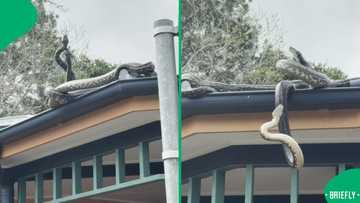
Read also
2 Massive snakes fight on rooftop in dramatic showdown in video, leaving South Africans buzzing
The most common mistakes people make include picking up snakes, trying to kill them, or failing to monitor the snake while waiting for help. The Stiletto Snake, in particular, is often picked up because of its small size, but its bite can cause severe pain and tissue damage. Attempts to kill larger venomous snakes, such as Black Mambas, also put people at serious risk of being bitten.
Making homes less attractive to snakes is possible with a few practical steps. Keeping the lawn short, trimming tree branches away from the roof, cutting back shrubs from windows, and avoiding clutter or rubbish heaps reduces the chances of snakes taking shelter.
3 More stories about snakes
- Briefly News also reported that a South African teen posted a TikTok showing him gifting his little brother a live corn snake, and the toddler’s reaction went viral.
- A man went viral after a video showed him calmly lying in a cage filled with dozens of snakes, showcasing his remarkable bond with reptiles.
- A Facebook video shows a massive snake, believed to be an African python, calmly slithering across a road.
PAY ATTENTION: Follow Briefly News on Twitter and never miss the hottest topics! Find us at @brieflyza!
Source: Briefly News

Justin Williams (Editorial Assistant) Justin Williams joined Briefly News in 2024. He is currently the Opinion Editor and a Current Affairs Writer. He completed his Bachelor of Arts (BA) degree in Film & Multimedia Production and English Literary Studies from the University of Cape Town in 2024. Justin is a former writer and chief editor at Right for Education Africa: South African chapter. Contact Justin at justin.williams@briefly.co.za

Nick Evans (Snake Rescuer and Educator) Nick Evans is based in Durban. He spends his time rescuing snakes (and people!) from households, conducting research on reptiles and educating the public on these animals in his blog The Mamba Mail. He researched Black Mambas, pet and snake conflict, human and snake conflict, Southern African Pythons, Green Mambas, Nile Monitor Lizards and more. Nick has been doing this full-time since 2015 but has been interested in reptiles his whole life.

